Britain’s combat air force is at a turning point. The National Audit Office’s report on the UK’s F-35 programme confirms what many in defence and industry already fear: years of delay, indecision and ambiguous planning have left the RAF and Royal Navy with shrinking fast jet mass, overstretched platforms, and no clear path through the next decade.
This failure has roots in the 2021 Integrated Review and its 2023 refresh.
These were meant to be strategic resets. Instead, they delivered unfunded ambitions, incoherent fleet targets, and repeated deferrals of critical procurement decisions, particularly regarding F-35 fleet size, Typhoon sustainment, and the delivery runway for GCAP.
Yet this is not a failure of ambition today. The 2025 Strategic Defence Review (SDR) sets out a credible, necessary vision: rebuilding sovereign industrial capacity, fielding integrated multi-domain forces, and reasserting the UK as a serious defence power.
This article is the opinion of the author. If you would like to submit your own article on this topic or any other, please see our submission guidelines.
But without hard decisions on numbers, contracts, and timelines, the Royal Air Force’s fast jet force could fall below 100 aircraft within 15 years, far short of the approximately 160 needed to maintain NATO readiness, maritime strike, QRA and sovereign defence. We can still recover, but we must act now, not in the next review cycle.
Typhoon Tranche 1s are already being retired. Tranche 2 and 3 aircraft, which were delivered between 2008 and 2019, will begin to reach the end of their designed operational life around 2035, with a significant portion due for phase-out by the early 2040s. GCAP, while technologically ambitious, will only enter service from the mid-2030s and will likely take years to reach operational maturity.
That leaves a dangerous capability gap. Without a clear bridging plan, the UK could face a decade-long hole in fast jet availability, unable to respond to high-intensity threats, provide surge capacity for NATO, or credibly deploy from carrier decks.
F-35: Finalise the Fleet and Commit to the Mix
The UK must now commit to its long-standing objective of acquiring 138 F-35s, but do so with a fleet composition that reflects operational reality and strategic value. The right mix and sequence is clear: 56 F-35Bs and 82 F-35As, 12 formidable front line squadrons.
The F-35B fleet should support four front-line squadrons (48 aircraft) for dual-carrier operations, with additional jets for attrition, training, and conversion in order to sustain sovereign carrier strike capability. Meanwhile, the lower cost, longer range, and higher payload-carrying F-35A should be acquired in sufficient numbers to generate six land-based squadrons, including the UK’s contribution to NATO’s nuclear burden-sharing posture and an operational conversion unit.
This mix provides Britain with two decisive combat air capabilities:
- Stealth penetration strike and ISR: day-one operations against advanced air threats and in Anti-Access/Area Denial (A2AD) environments
• Credible NATO-aligned nuclear and conventional deterrence: based on an aircraft with lower sustainment costs and higher availability
We must commit to this order now, not release piecemeal commitments which inflate future cost by disrupting economies of scale and reducing production efficiency. Industry too must bear some of this financial risk, but can only do so when presented with a clear and sizeable order.
By making this commitment now, the UK can restore certainty to its industrial partners, relieve pressure on the carrier fleet, and ensure its fast jet force remains interoperable, lethal, and credible well into the 2040s.
Typhoon: Retain, Replenish, and Export
Typhoon remains a formidable air dominance and multi-role platform. But it is close to the end of its service life. To maintain force mass, the UK must retain 50–60 Tranche 2/3 Typhoons until at least 2038. More importantly, to prevent the collapse of sovereign jet-building capability before the Global Combat Air Programme (GCAP) ramps up, we must order 40–50 new Tranche 4/5 Typhoons by 2028.
Germany and Spain are already doing this. If we fail to act, we risk losing design integration, export momentum, and thousands of high-skill aerospace jobs. Typhoon is still exportable. It remains a pillar of Europe’s defence ecosystem, and the UK has recently signed a preliminary multibillion-pound Typhoon deal with Turkey, reflecting renewed confidence and support among Eurofighter nations. But if Britain shows no confidence in its own product, why should prospective buyers?
GCAP: No Repeat of Tornado to Typhoon
GCAP is vital to the future defence and security of the UK. But it will not be possible if there is a 10-year vacuum in domestic fast jet production. The last time the UK allowed a gap of this kind, between the end of Tornado GR4 production and the ramp-up of Typhoon, we saw a dramatic erosion in sovereign engineering capability, loss of key skills, and the offshoring of vital subsystems. That mistake cannot be repeated. GCAP must represent a continuation of sovereign fast jet production, not its resurrection.
That means:
• Contracting long-lead components by 2027
• Securing low-rate production by 2031
• Delivering the first front-line aircraft by 2035
This “always-on” model is not just about avoiding job losses. It is about preserving system integration expertise, radar and sensor innovation, digital twin development, and high-spec composites and propulsion capability. If there is no work for UK engineers throughout the 2030s, there will be no capability left to bring GCAP to life, no skills to integrate, no IP to protect, and no base to scale.
Let Typhoon Fly as a Symbol of Britain’s Identity
One decision, powerful in symbolism, would reinforce the UK’s commitment to sovereign aerospace capability: convert retired Typhoon Tranche 1s into the next Red Arrows display jets.
The Hawk T1 fleet has retired. Rather than outsourcing or borrowing aircraft from allies, the Red Arrows could continue to fly British, with Typhoon filling in while a decision on the British-built modular AERALIS trainer is finalised. A fleet of 12 demilitarised Typhoons would reinforce the export image of UK platforms, align with efforts to market Typhoon and GCAP abroad, and showcase RAF fast jet excellence to a global audience. The cost of maintaining Typhoons in this role would be significant, but we should expect defence primes who stand to benefit from expanded export markets to step up financially. If we are to be a defence export-driven nation, we need industry to front more of these costs.
This idea is not nostalgia. It is strategic branding. And it matters, especially as the UK seeks to reassert leadership in the combat air export market. Whatever direction is taken, we cannot ignore the need for a Red Arrows stopgap and must work energetically and collaboratively to find a solution.
Delivery Is the Difference
The UK’s defence establishment knows what is required. We need an integrated combat air force, a credible carrier fleet, a sustainable strike force, and a sovereign pipeline for the next generation of fast jets.
The 2025 Strategic Defence Review gives us a blueprint. It embraces integrated capability, long-term industrial sovereignty, and British leadership on collective defence. But it must be backed by action. The past fourteen years show us what happens when strategy lacks delivery.
We must now do what the last government failed to do: commit to the full F-35 fleet, invest in Typhoon retention and bridging procurement, and keep GCAP on track with no industrial or capability gap. This is not just about combat aircraft. It is about jobs, readiness, and credibility. The window to act is closing. The risks are rising. The decisions must be made now, before ambition, once again, outruns delivery.


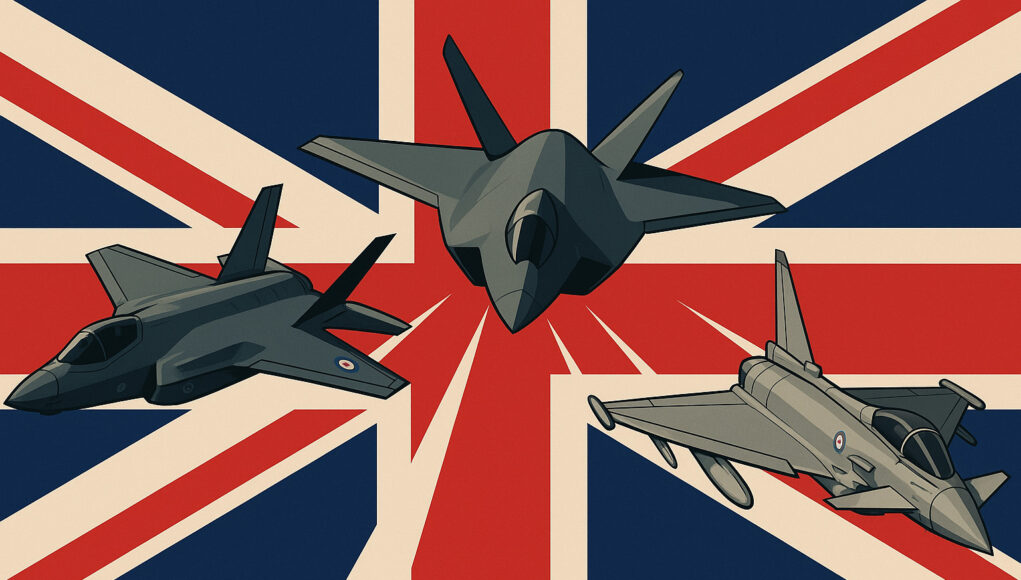

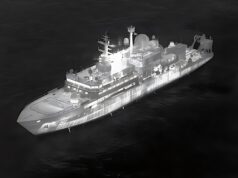

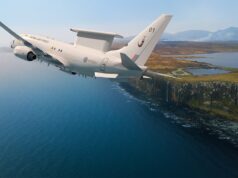
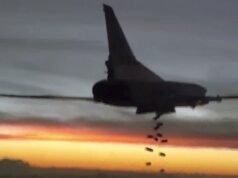
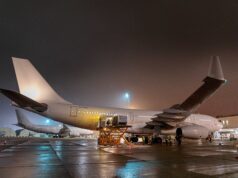

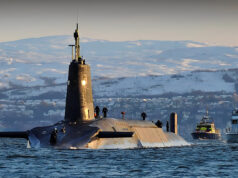
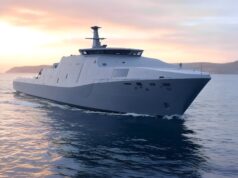


Cut F35B even more, sure that will end well….
Certainly could be disempowering for carrier ops. I mentioned a 50/50 B/A split at worst below but maybe 90 B and 50 A’s, might be better if there’s to be both?
Agreed, the wrong mix for, “day-one operations against advanced air threats and in Anti-Access/Area Denial (A2AD) environments”. Wouldn’t need be more than 48 F-35A’s. 52 F-35B’s is totally in-sufficient for two carrier operations!
The RN must have long ago (2010?) realised that it was never going to be able to field two decent carrier air groups, each with 24 F-35’s, a squadron of Merlin ASW helicopters, and 3-4 AEW platforms. Instead we have the embarrassment of the designated high readiness carrier occasionally embarking a modest air group, while the other carrier sails around with a lonely Wildcat on the flight deck, with the very occasional visiting F-35 or helo for flight deck qualification of the pilot. I also believe that a huge mistake was made c.2022 by not moving the under utilised second carrier (then POW) to reduced readiness, and using the crew thus freed to recommission Bulwark.
That F35-F35A split doesn’t look right. There’s the possible need to fill up the two carriers at any given tine and have some as buffer. Why not a 60+12 for 72 B’s and same for the A’s. Why stop at 138, add a few more if needed?
Will the UK also look at getting cannon pods for the B’s now they’re getting the A’s if the cannon and ammunition is the same?
Wouldn’t be surprised if we don’t get ammo for the As…
Lol. Alright…I propose a podded Dragonfire instead! All that energy coming out of the engines backside – some could be re-routed into a DEW!?
The cynic in me says that Labour will try to delay the nuclear subs and instead rely on the F35A fighters to bridge the gap.
The government are experts in wasting money elsewhere and instead pinching in defence.
Wake me up when this government actually order some jets, transport aircraft, helicopters, ships, submarines, armoured vehicles, guns for the RA, SHORAD, MRAD, booms for Voyagers, and so on.
I agree with the piece, but HMG have no interest in defence, look at this lot. Masters at talking, but of actually doing?
The scoreboard for this decade stands at 53 Jackal E, 14 Archers, maybe around 20 Stormshroud Drones, and 3 classifed high altitude ISTAR assets according to Jim. ( Janes )
Anything else I have missed to add?
I’m more concerned that the MP thinks we could have 12 squadrons of 12 aircraft without any reserves or rotation. Better to have fewer but stronger squadrons that contain enough available aircraft to achieve the mission. It also allows a more pragmatic and affordable build rate.
If the mp could push for 1 air superiority wing for the RAF, another squadron for deep/tactical strike and enough planes for one surged carrier, then I’m sure we’d all be extremely happy. That would be more pragmatic, realistic and achievable before Tempest eats up the budget.
After that you are down to replenishment and small volume orders!
I’ll get interested when an *additional* 24 F35B get ordered with MRSS and T32.
IRL I suspect that the holdup with F35B is getting commitment on weapons integration. Which is hard as we have unique requirements for a small number of frames.
I’m sure Hugo will be up next with the ‘can’t crew them record’
I am very pleased to see UK journalist taking a realistic angle to production issues. For once, I feel on the same page. Production is key. UK workers make Typhoon it entierly. And this has a tremendous value.
In my country, France, people computed that with maintenance schedull, 2 nuclear strike squadrins, training and attrition, to have 40 planes always ready, we needed at least 235 planes. For the navy, we shall need 60 planes to field 20. So the next goal is a 295 planes forcé. Meaning we are currently increasing the force by 100 Rafales, to deter Russian forces. In the next decade, remaining M2K will gradually be replaced by « Neuron » like plateform so approximately 100 airframes may replaced by 100+ drones.
If UK is a little bit smaller for a decade, due to the F35 and the big planning gap due to GCAP, we may look at it as ok, but 100 planes is not really serious. And no industrial capabilities, we would look at it with consternation and disbelief. UK is our best allies. And we know that when we have a common program with you it works (meteor, storm-shadow and more to come). I hope you will quickly be back on track.
Hiya DM- I’d like to see a Typhoon Tranche 4 top up
Sorry but Tranche 1 Typhoon for a display team is a non-starter on so many fronts, and I’d expect Calvin to know this from former colleagues who have operated it.
As for the numbers of jets, I’m afraid they too are for the birds. To grow from 7-8 frontline sqns to what amounts to at least 16-18 (while also growing GCAP) is simply unachievable without vast capital investment and huge recruitment AND retention effort of air and ground-crews. Even if the people and infrastructure can be found what gives to make financial way?
I regret that while noble and hugely desirable from an operational standpoint, this is largely fanciful in scale and optimism. A bit like the SDR (and its lack of actual commitment to funding and timelines).
Wrong in so many ways.
We committed to F35B as the only affordable way of regenerating carrier fixed air capability. Whether the size and cost of the carriers was sensible is a separate question but there is no doubt that a catobar solution would have cost even more.
The F35 problems – far higher than expected unit cost, high and growing sustainment costs, and poor levels of availability – have affected all versions of F35. The glacial progress on block 4 and the linked delay in integration of planned UK weapons has reduced the effectiveness of the carrier fleet but may be solved in due course. But committing to the A variant, which was never the plan, makes no sense at all. It would undermine the GCAP programme, damage sovereign industrial capability and make us even more dependent on LM over whom we have no control. It is surprising that someone with Baileys background doesn’t grasp this.
We do need to restore lost combat mass and sustain that until GCAP starts to deliver. The obvious solution is to order more Typhoons, taking the active fleet to at least 160.
Using T1 to provide an interim successor to Red Arrow Hawks is probably a non starter. No other display team uses such powerful and costly aircraft.
Fully red painted Typhoons would be quite a sight! It’s a shame that the UK government isn’t getting behind a top up Typhoon order when Germany, Italy, Spain are. Why can’t the RAF Typhoon’s be nuclear deliverable certified for something more sovereign? Aren’t Italy’s Typhoons? Are they not considered stealthy enough? What about France’s Mirage 2000’s?
Blue Angels use F/18E, The Thunderbirds use F16C, Russian Knights use SU27, Whatever the Chinese ones are called use J10C…. It’s only the European teams that seem to use predominantly trainers.
Yeah I checked after posting. F16,F18 are much cheaper to buy and operate than Typhoons.
This is somewhat disheartening to hear from an MP in the government… It isn’t affordable or wise to have this many front-line squadrons. Sure you could have 12 very small front-line squadrons of 12 aircraft if you filed the complete order for 138 aircraft. However, by the law of thirds, and without any attrition, you could only expect to have 4 aircraft from each squadron avaliable at one time… which is not tactically significant or useful. In any war, there is going to be attrition, so you would be better off sticking to 4-5 squadrons aircraft. This means you can always put a strong force if 12 aircraft in the air and sustain it, even while tolerating losses and maintenance cycles.
1 F35A squadron for the RAF for air superiority in the context of networked warfare
1 F35A squadron for tactical nuclear strike and deep strike
2 F35B squadrons for carrier defence
1 F35B squadron for carrier strike and expeditionary force air cover
The F35B has a very poor economy and turn-around time. I think we should be considering a national airforce strategy similar to the ship building strategy i.e. look at building cheap to manufacture and cheap to maintain Gen 5 airframes. Something like Saab’s proposing for putting the updated Typhoon engine into the Gripen E. This pushes its combat capabilities past Russian and Chinese Gen 5 fighters, and if the tempest team could help them redesign the engine inlets and thrust vectoring rear i.e. rear signature, then its smallsize means its radar cross section is not significantly bigger than the larger Chinese or Russian air superiority fighters. Its lower operating cost and lower maintenance complexity means that you can buy and run 3 hybrid gripens for the price of a single F35A or F35B.
We must stop promising fantasy fleets and wunderwaffen. Wars are economic in nature, and we need to think along the lines of the Type 31 frigates i.e. a bit more pragmatic and realistic.
“56 F-35Bs and 82 F-35As, 12 formidable front line squadrons … The F-35B fleet should support four front-line squadrons (48 aircraft)”
Apologies but the MP seem to have lost contact with reality when calculating that 138 F-35’s can sustain 12 squadrons. As the NAO reports, the availability of the UK’s F-35s is proving depressingly low – with all too many hanger queens, aircraft robbed for parts to keep others flying, aircraft in deep maintenance, aircraft being upgraded, aircraft undergoing major repairs, and older aircraft that can no longer be upgraded being relegated to training duties only. The UK has got 2 frontline squadrons from buying 48 F-35’s and expects to get a third from 72. A final buy of 138 probably equates to four or at a stretch five frontline squadrons given that some aircraft delivered in the mid-2030’s onwards will just replace obsolete aircraft delivered in the mid-2010’s onwards. Even ignoring all this, the MOD doesn’t have the many £billions needed to provide base facilities, pilots, maintainers, spares and weapons for 12 Lightning squadrons.
Exactly. He believes 56 F35Bs will provide 4 squadrons to equip the two carriers. If that’s right, we only need to order 8 more to meet RN requirements. He seems to have forgotten that the original plan was to replicate joint Harrier fleet numbers and ensure both carriers could carry 36 each. Financial reality meant the 138 morphed into an ambition over the aircraft lifetime. But it was still driven by the need to equip the carriers.
Nor does he seem to understand the financial reality of his suggestion.
At the same time as funding GCAP to the mid 2030s, he wants
90 more F35s -@£9b
50 more Typhoons -@£5b
This would double the current fast jet fleet and require a big increase in pilot training which we are struggling to deliver at current levels.
No one has issue with the sentiment of this article but as has been pointed out by Daniele for all our sakes let the government actually place a defence order of significance. Words as we all know come cheap.
Yet another report/audit warning of the impending collapse of our fadt jet fleet. Its sure to gather dust on a shelf somewhere.
To be honest, we need something a lot cheaper to rebuild numbers, not just yet another small batch of extremely expensive platforms. A dual role trainer & light attack fighter, such as the South Korean T/A-50 or an EJ200 engined TAI Hürjet would make sense. With a modern AESA radar, they could do basic air defence with Meteor, carry stand off or anti-ship missiles. Not every aircraft has to be exquisitely expensive. Throughout the Cold War, and up until the early 2000s, we recognised this, operating relatively cheap and cheerful types like Jaguar.
If we do get the Typhoon sale to Türkiye through, then we should look at getting a joint production of the Hürjet. It could replace the Hawk T.1/T.2, and give us something more affordable than Typhoon & Lightning for the 90% of the time that those jets are overkill.
I am wondering… Should the attack planes be more.. Expandable? And Air policing planes or air defense plane could be a bit more expensive? Why are we talking of a reverse fleet with expensive F35 for attack and cheap airframes for defense?
The idea behind the Typhoon is correct. The idea of the F35 is doomed from the start, since for agression, you will have attrition and raids need to strike deep. So the exact countrary of the F35. The idea of using training plate-forme to defend the skies… A supersonic plateform with short range makes sense for France, for we shall intercept for point defense, but until now, UK policy was to protect North sea assets, like petroleum installation. Has it changed?
The air defence mission would still mainly rely on Typhoon for now, though the range of aircraft like the Korean FA-50 isn’t too bad. In effect the aircraft would primarily be filling the strike role, previously filled by the Harrier and Jaguar. Certainly the FA-50 is capable of carrying a decent AESA radar, so should be capable of shorter range air defence missions too, eg the Baltic air policing role. With more modern standoff weapons, eg the delayed Spear 3, anti-ship missiles like NSM/JSM and others, a less advanced/cheaper platform isn’t as much of an issue.
Ultimately it’s a numbers game, and we simply don’t have the number of aircraft to do everything. It’s like the submarine situation, going for purely SSNs sounded great, until it meant we have so few that we can’t keep them at sea persistently. As it is, we can’t do a deployment in force, eg sending a couple of squadrons to Romania or the Baltics without scraping together aircraft from everywhere else.
Well… then why not pool ressources together, UK, France, Sweeden. If we look for a light plateforme like M2K or Grippen, it seems we have all the knowledge to do so.
France has to replace M2K, UK need numbers and many F16 are there for grab.
The cost per flight hour of M2K or Grippen is around 5000€. Rafale is about 17K€ and F35 is about 50000€. So if we need numbers and low operating costs, sacrifice would have to be made on something (Range, payload, speed, connectivity, stealth).
I am not totaly sure, but air to ground mirage 2000D are targeted to be replaced by Neuron combat drone starting in 2035. The mirage 2000-5 has no replacement. Air policing is difficult to do by drones, but air defence can. So we will have to make quick soon. I hope the room for cooperation will not be lost.
I agree, arguably even resurrecting the EADS Mako might have made sense. Give it a flexible engine bay to enable any of EJ200/M88/F414 engines, radar of your choice etc… The key thing would be to keep actual airframe costs down. There’s no point designing a lightweight fighter/trainer if the upfront costs are close to that of the Rafale/Typhoon. That’s the area where the Gripen suffers – it has low hourly costs, but the unit costs aren’t far off that of the Typhoon or Rafale, or even F-35. Otherwise I’d be all for just buying a bunch of JAS-39Es!
Buying lots of f35 a’s possibly jeopardising the future of tempest. Agree build some more typhoons is the cost of retaining uk skills.
Given the slow purchase policy of MOD surely some of the current F35B’s already delivered will have run out of useful life before the last order is made so we will never have 138 operational F35s. Indeed like the Typhoon 1’s some of the early F35 may not be updateable and their software will become unsupported. This brings me to a further question – does MOD pay for each software update or is part of a package deal. If the former applies it is also likely that MOD may choose not to upgrade the early F35s if the software update is large and expensive. Having a small fleet of A models will need a separate support policy adding more complexity and support issues for a fleet of just 12 aircraft. It must make more sense to buy more F35A’s for the RAF and reduce the B purchases given the A model is more capable and could we ever afford to have a third of our total buy on the carriers in the Pacific where they coud easily be all lost if the Carriers are badly damaged or sunk in a single action.
Pie in the sky nonsense. The numbers don’t add up. The projected total of 138 F35s is the life time buy (it’s been said often enough on this website) so the plan was only to have 4 frontline squadrons plus OCU. We might not get that the way things are going with pilot and maintainer training and retention. 40-50 more Typhoons won’t happen because it will take funding from GCAP. And Tranche 1 for Red Arrows? Nope.
Clearly with a limited budget the UK should learn from France and support its own domestic industry. That means cancelling any further F35 orders for the RAF or RN and ordering a further batch of Typhoons for the RAF with all the planned upgrades such as conformal fuel tanks. 10 to 20 % increase in engine thrust and further avionics and radar upgrades. Clearing the Typhoon to operate new build British We177 nuclear bombs would by pass the expensive regulatory burden the US deliberately places on clearing none US sourced types from operating their nuclear free fall bombs. In the mean time the GCAP Tempest should be developed to be carrier capable from entry to service with the baseline variant the naval one. As with the Phantom, a dedicated naval combat jet also makes a superb land based combat jet but not the other way round. Additionally, the Hawk should be put back into production with an all UK sourced Adour engine minus the dodgy low pressure compressor, a slatted wing and fly by wire. The Hawk still has a lot of development potential and ceasing its production was a short sighted political decision.
Bear in mind had beer, why do we need f35A? Yes get 70 odd f35b as originally planned and make up numbers with typhoons. I’ve been to airshows and I am less fussed about red arrows really. F35b for day 1 on or off carriers and typhoons day 2. Doesn’t have to be complicated. We have to aim at tempest otherwise slave to usa.
Union Jack graphic as an article header? Now that’s something you don’t see very often.
F35 are Great. Other warplanes are wonderful. We need more, of course. And who would we bomb? There is no credible enemy in sight. Are the Falklands’ sheep in danger? We don’t need to be in a rush to buy.